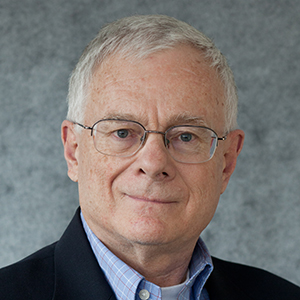Robert Kee
George R. Brown Distinguished Professor, Mechanical Engineering
 Professor Kee holds the George R. Brown Distinguished chair. Dr. Kee’s research interests are primarily in modeling and simulation of chemically reacting fluid flow. Applications are generally in the area of clean energy, including fuel cells, photovoltaics, and advanced combustion.
Professor Kee holds the George R. Brown Distinguished chair. Dr. Kee’s research interests are primarily in modeling and simulation of chemically reacting fluid flow. Applications are generally in the area of clean energy, including fuel cells, photovoltaics, and advanced combustion.
Dr. Kee’s sponsored research efforts are primarily in the modeling and simulation of thermal and chemically reacting flow processes, with applications to combustion, electrochemistry, and materials manufacturing. His fuel-cell research concentrates on elementary chemistry and electrochemistry formulations and their coupling with reactive fluid flow. Primary applications are to solid-oxide fuel cells operating on hydrocarbon fuels. His combustion research emphasizes the use of elementary chemical kinetics to understand fundamental flame structure.
Recent research includes efforts on catalytic-combustion and water-mist flame suppression. The materials-processing efforts emphasize the design, optimization, and control of chemical-vapor-deposition processes, with applications ranging from thin-film photovoltaics to CMOS semiconductor devices. The work includes development of computational methods and software to solve systems of stiff differential equations. It also includes development of an extensive system of general-purpose chemical-kinetics and molecular-transport software.
Dr. Kee is the principal architect and developer of the CHEMKIN software, which is the leading software package used worldwide for simulating chemically reacting flow.
Contact
Brown Hall W370E
303-273-3379
rjkee@mines.edu
Publications
- R.J. Kee, H. Zhu, B.W. Hildenbrand, E. Vollestad, R.P. O’Hayre, M.D. Sanders, “Modeling the steady-state and transient response of polarized and non-polarized proton-conducting doped-perovskite membranes,” J. Electrochem. Soc., 160:F290-F300 (2013).
- H. Zhu, A. Kromp, A. Leonide, E. Ivers-Tiffée, O. Deutschmann, R.J. Kee, “A model-based interpretation of the influence of anode surface chemistry on solid oxide fuel cell electrochemical impedance spectra,” J. Electrochem. Soc., 159:F255-F266 (2012).
- G.M. Goldin, A.M. Colclasure, A.H. Wiedemann, R.J. Kee, “Three-dimensional particle-resolved models of Li-ion batteries to assist the evaluation of empirical parameters in one-dimensional models,” Electrochimica Acta, 64: 118–129 (2012)
- A.M. Colclasure and R.J.Kee, “Thermodynamically consistent modeling of elementary electrochemistry in lithium-ion batteries,” Electrochima Acta, 55:8960–8973 (2010)
- G.M. Goldin, A.M. Colclasure, A.H. Wiedemann, and R.J. Kee, “Three-dimensional particle-resolved models of Li-ion batteries to assist the evaluation of empirical parameters in one-dimensional models,” Electrochim. Acta, 64:118-129 (2012).
- A.M. Colclasure, K.A. Smith, and R.J. Kee, “Modeling detailed chemistry and transport for solid-electrolyte-interface (SEI) films in Li–ion batteries,” Electrochimica Acta, 58:33-43 (2011).
- R.J. Kee, B.B. Almand, J.M. Blasi, B.L. Rosen, M. Hartmann, N. P. Sullivan, H. Zhu, A.R. Manerbino, S. Menzer, W.G. Coors, J.L. Martin, “The design, fabrication, and evaluation of a ceramic counter-flow microchannel heat exchanger,” Appl. Thermal Engr., 31:2004-1012 (2011).
- C. Moyer, N.P. Sullivan, H. Zhu, R.J. Kee, “Polarization characteristics and chemistry in reversible tubular solid-oxide cells operating on mixtures of H2, CO, H2O, and CO2,” J. Electrochem. Soc., 158:B517-B131 (2011).
- A.M. Colclasure, B. Sanadaji, T. Vincent, R.J. Kee, “Modeling and control of tubular solid-oxide fuel cell systems. I: Physical models and linear model reduction,” J. Power Sources, 196:196-207 (2011).
- B. Sanadaji, T. Vincent, A.M. Colclasure, R.J. Kee, “Modeling and control of tubular solid-oxide fuel cell systems. II: Nonlinear model reduction and model predictive control,” J. Power Sources, 196:208-217 (2011).
- M. Pillai, Y. Lin, H. Zhu, R.J. Kee, S.A. Barnett, “Stability and coking of direct-methane solid oxide fuel cells: Effect of CO2 and air additions,” J. Power Sources, 195:271-279 (2010).
Recent Courses
- Heat Transfer
- Viscous Flow and Boundary Layers